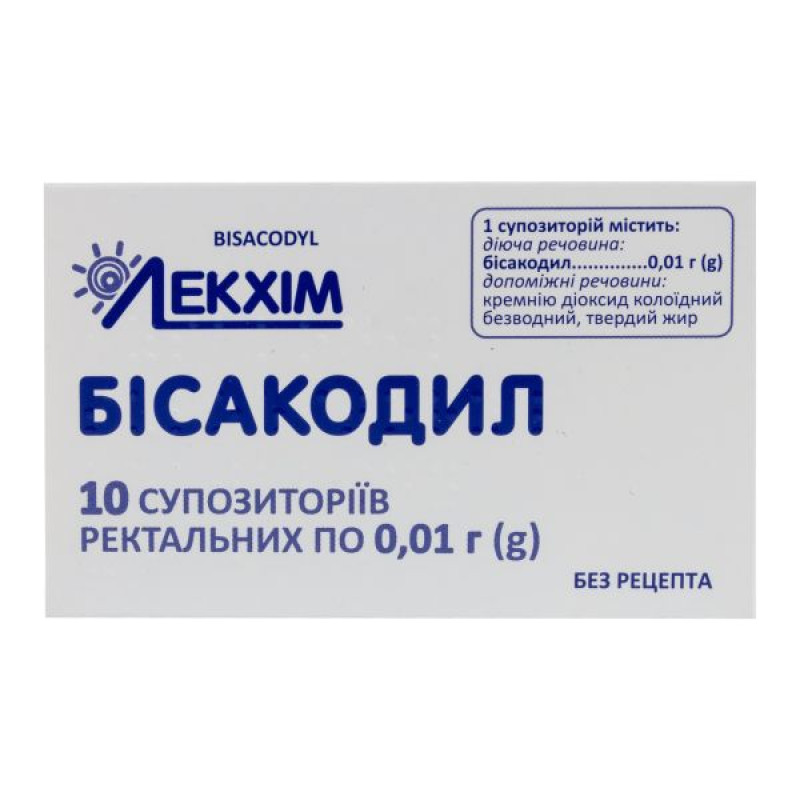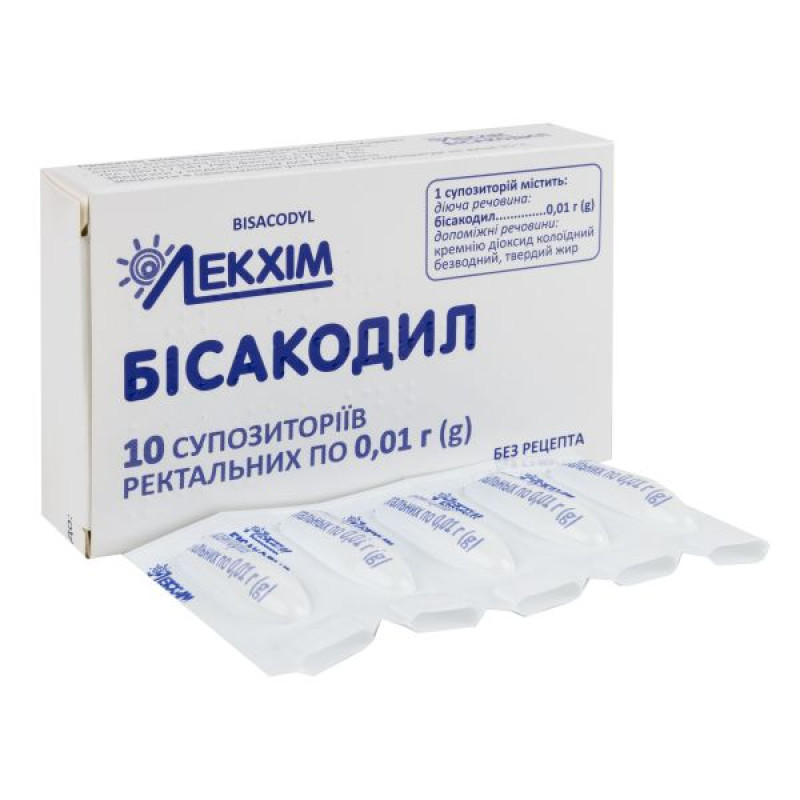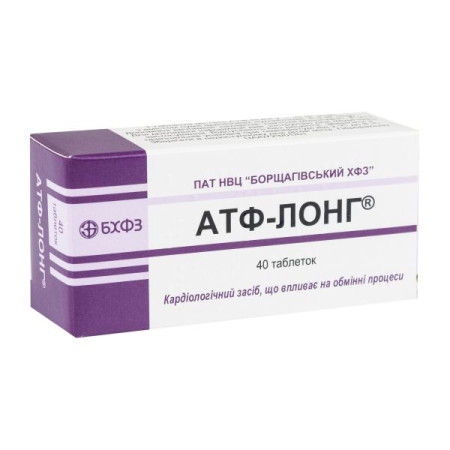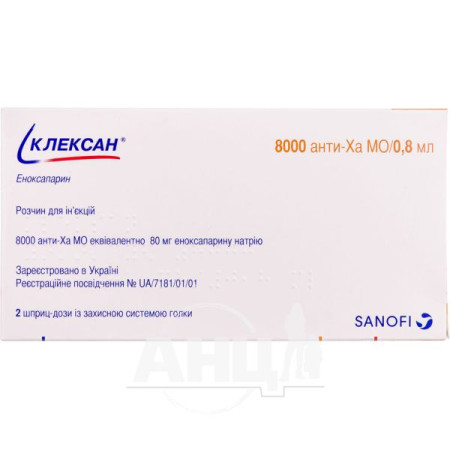Bisacodyl rectal suppositories 0.01 g blister No. 10
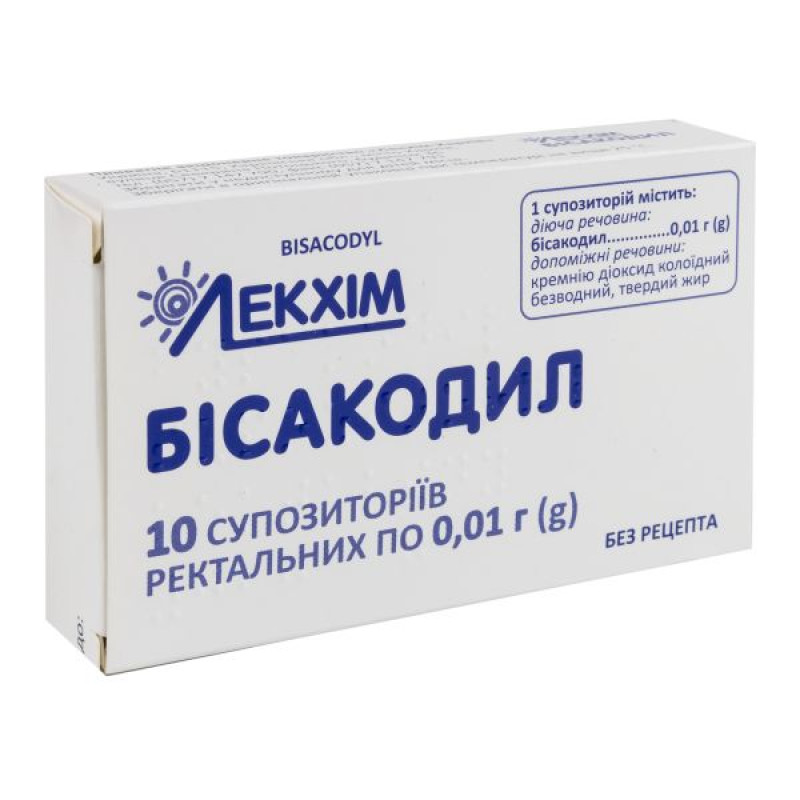
Instructions Bisacodyl rectal suppositories 0.01 g blister No. 10
Composition
active ingredient: bisacodyl;
1 suppository contains bisacodyl 0.01 g (10 mg);
excipients: colloidal anhydrous silicon dioxide, solid fat.
Dosage form
Rectal suppositories.
Main physicochemical properties: white or cream-colored, spherical suppositories.
Pharmacotherapeutic group
Contact laxatives. ATX code A06A B02.
Pharmacological properties
Pharmacodynamics.
Bisacodyl is a laxative that stimulates colonic peristalsis by irritating the mucosa or directly stimulating nerve endings in the submucosal and mucosal nerve plexuses.
Pharmacokinetics.
Bisacodyl is poorly absorbed from the gastrointestinal tract and itself affects the absorption of electrolytes. As a result, increased osmotic pressure in the intestinal lumen retains more water, which has the effect of softening the stool and facilitating its passage through the colon. In addition, the volume of stool increases, which stimulates peristalsis and facilitates defecation.
Bacterial enzymes in the colon metabolize bisacodyl to the active compound, a diphenol, which is conjugated with glucuronic or sulfuric acid during the first pass through the liver and returned to the intestine via enterohepatic circulation. This process prolongs the drug's action.
Absorption of bisacodyl after intrarectal administration is minimal. Absorbed bisacodyl is deacetylated in the liver to form a phenolic derivative, which is subsequently excreted in the urine. The fraction remaining in the colon is excreted in the feces.
Indication
Short-term symptomatic treatment of constipation, including habitual constipation and chronic constipation in bedridden patients and elderly patients; before diagnostic procedures, surgical and obstetric interventions, as well as in the pre- and postoperative period.
Contraindication
Hypersensitivity to bisacodyl and other components of the drug.
Intestinal obstruction.
Acute diseases of the abdominal organs, including appendicitis and acute inflammatory bowel diseases.
Severe abdominal pain associated with nausea and vomiting, which may indicate the above serious conditions.
Severe dehydration.
Anal fissures or ulcerative proctitis with mucosal damage.
Interaction with other medicinal products and other types of interactions
Bisacodyl enhances the action of cardiac glycosides by reducing serum potassium levels. It also enhances the kaliuretic effect of diuretics and glucocorticoids.
Concomitant use of Bisacodyl with other laxatives may increase gastrointestinal adverse reactions.
Application features
Duration of treatment. As with other laxatives, Bisacodyl should not be used continuously for more than 5 days without determining the cause of constipation. Prolonged and excessive use of the drug may cause electrolyte and fluid imbalance, as well as hypokalemia.
Loss of fluid in the intestines. Loss of fluid during defecation can lead to dehydration, which may be accompanied by symptoms such as thirst and oliguria. Dehydration can be harmful to the body (for example, in renal failure, in the elderly), so if the above symptoms occur, the use of the drug should be discontinued and resumed only under the supervision of a doctor. Long-term use may lead to the formation of a habit, when the act of defecation will be possible only after using a laxative.
Elderly patients. Frequent use of Bisacodyl in elderly patients may increase asthenia, cause orthostatic hypotension and coordination disorders associated with electrolyte loss. The drug may reduce serum potassium levels.
Dizziness, syncope. Dizziness and syncope may occur during defecation, and defecatory syncope and vascular reactions may occur during abdominal pain, which may be associated with constipation requiring laxative use.
Digestive disorders: There have been isolated reports of abdominal pain and bloody diarrhoea with bisacodyl, which may be due to ischemia of the intestinal mucosa. Some patients may experience blood in the stool, which is generally mild and does not require treatment (see section 4.8).
Suppositories are not recommended for use in patients with anal fissures, proctitis and ulcerative hemorrhoids, as this may lead to pain and local irritation. Do not use in patients with obstructive bowel diseases or acute conditions such as appendicitis, as well as in patients with inflammatory bowel diseases.
Local reactions: Pain and local irritation may occur when using suppositories, especially in the presence of anal fissures and ulcerative proctitis.
Solid fat can reduce the effectiveness of latex products (condoms).
Stimulant laxatives, including Bisacodyl, do not promote weight loss.
Use during pregnancy or breastfeeding
Bisacodyl is not recommended for use during pregnancy, especially in the first trimester, unless the expected benefit to the mother outweighs the potential risk to the fetus, and only on medical advice. There are no adequate and well-controlled clinical studies in pregnant women.
Bisacodyl is not recommended for use during breastfeeding, unless the expected benefit to the mother outweighs the potential risk to the fetus, and only on medical advice. It is not known whether bisacodyl is excreted in breast milk.
Ability to influence reaction speed when driving vehicles or other mechanisms
No studies have been conducted on the ability to drive or use machines. However, patients should be advised that due to the possibility of dizziness and/or syncope, they should refrain from driving or operating machinery.
Method of administration and doses
Before using the suppository, you must:
tear off one suppository from the primary packaging along the perforation line of the blister pack;
Next, you need to pull the edges of the film, tearing it in different directions, and release the suppository from the primary packaging.
The drug is intended for rectal use.
Bisacodyl should only be used for the treatment of adult patients: 1 suppository once a day, usually in the morning. Treatment should not exceed 7 days.
Children.
The drug should not be used in children.
Overdose
The use of Bisacodyl in high doses can lead to diarrhea, abdominal cramps, and clinically significant loss of potassium and electrolytes. Sometimes intestinal atony and congestive inflammation of the rectum may occur.
Prolonged use of laxatives can cause chronic diarrhea, abdominal pain, hypokalemia, secondary hyperaldosteronism, and nephrolithiasis. As a consequence of hypokalemia, renal tubular damage, metabolic alkalosis, and muscle weakness have been reported.
Treatment: fluid replacement therapy and correction of electrolyte imbalance (especially hypokalemia). This is especially important for elderly and young patients. Antispasmodics may be prescribed.
Side effects
The frequency of adverse reactions is classified as: very common (≥ 1/10), common (≥ 1/100 < 1/10), uncommon (≥ 1/1000 < 1/100), rare (≥ 1/10000 < 1/1000), very rare (≥ 1/10000), frequency unknown (cannot be estimated from the available data).
Immune system disorders: Rare: hypersensitivity and allergic reactions, including angioedema and anaphylactic reactions.
Metabolism and digestive disorders: rarely - dehydration.
Nervous system: infrequently - dizziness, fainting. These side effects that occur after using the drug are associated with a vasovagal reaction (i.e. due to intestinal spasm, straining during defecation); rarely - syncope.
Gastrointestinal: often - discomfort, pain, abdominal cramps, nausea and diarrhea; infrequently - blood in the stool, vomiting, abdominal discomfort, anorectal discomfort; rarely - colitis, including ischemic colitis.
Local reactions (reactions at the injection site, including pain, irritation): frequency unknown - the use of suppositories may be accompanied by pain and local irritation, especially in anal fissures and ulcerative colitis.
Expiration date
3 years.
Storage conditions
Store out of the reach of children in the original packaging at a temperature not exceeding 25 °C.
Packaging
5 suppositories in a blister, 2 blisters in a pack.
Vacation category
Without a prescription.
Producer
Private Joint-Stock Company "Lekhim-Kharkiv".
Location of the manufacturer and address of its place of business.
Ukraine, 61115, Kharkiv region, Kharkiv city, Severyna Pototskoho street, building 36.
There are no reviews for this product.
There are no reviews for this product, be the first to leave your review.
No questions about this product, be the first and ask your question.







